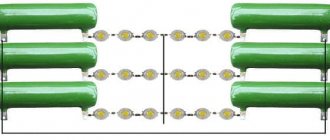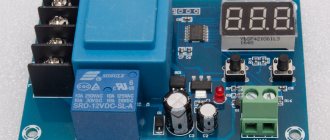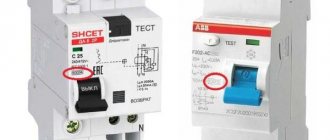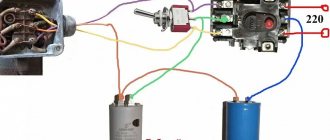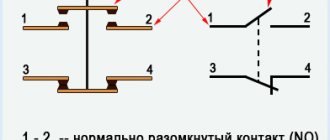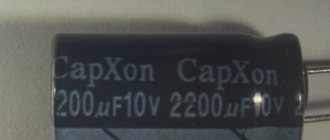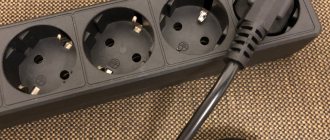Most of Russia's territory is a region with distinct seasons. There is a winter with negative temperatures, a warm summer and an off-season.
When carrying out private development, builders plan concrete work for the beginning of autumn, but in large construction it is unprofitable to allow downtime in work for six months. There may be other reasons for concreting at inappropriate temperatures:
- Work on soft soils, which are only possible in winter.
- Seasonal reduction in the cost of materials and work.
- The ability to transport materials on frozen roads without any problems.
Therefore, measures have been developed to warm up the concrete.
Warming up concrete: what is it?
Warming up concrete is a method of changing the physical characteristics of a building mixture, used when working in conditions of air temperatures below +5 degrees on average per day. Its purpose is to prevent freezing of the newly laid composition. The mixture begins to set within a few hours after installation. When concrete dries, a chemical reaction occurs between the water and the cementitious material. Its activity is affected by the ambient temperature. If the temperature approaches zero, the interaction processes stop. This reduces the rate at which concrete gains strength. Because of this, the mixture separates and crumbles.
Installation of PNSV cable
Installation of heating wiring consists of two stages:
- Installation of heating circuits;
- Location and fixation of heating wiring.
Installation of heating circuits
The heating wire PNSV is laid already during the installation of the formwork. The scheme for attaching the cable to the steel frame is thought out at the stage of creating a project for a reinforced concrete or concrete structure. To ensure uniform heating of the concrete using the PNSV wire, the cable branches are placed with equal spacing between each other.
The optimal gap between the heater branches should be 15 cm. The wiring branches are mounted in separate segments. If heating is carried out from a 380-volt network, then the length of an individual section will be 31 meters. When powered by a 220 volt current source, the wire length will be 17 m.
If these standards are exceeded, long wires will not reach the required heating level, and heat will not reach the outer heating zones in the required quantity. It should be remembered that heating concrete with wire is a one-time use. After the concrete has gained full strength, the cable is disconnected and left in the monolith mass.
Location and fixation of heating wiring
The location and fixation of heating wires is carried out according to the following method:
- Determine the diameter of the heating wire. If there is a reinforcement cage, use a vinyl-insulated cable; it is the most durable. For a monolith without reinforcement, wires with a polypropylene sheath are used.
- The cable is cut into equal length pieces and rolled into longitudinal spirals.
- The spiral branches are threaded through the reinforcement frame without touching the inner surface of the formwork. The optimal distance between the wire and the fences should be 100-150 mm.
- The cable is tied to the fittings with aluminum wire or polymer ties.
- The cable is laid so that it does not extend outside the formwork.
- After the first signs of setting of the poured concrete solution, the KTPTO transformer substation is turned on. The degree of heating of the wire is adjusted by increasing or decreasing the voltage.
Why is it necessary to warm up concrete in winter?
To understand why concrete is heated, you need to understand how it hardens. Under the influence of low temperatures, the natural hardening of the cement mixture occurs unevenly due to the presence of water in it. Comfortable temperature for concrete hardening is +20 °C. Forced heating of the building composition helps to get closer to this indicator and not interrupt work even in severe frosts.
The technological process of construction in winter involves the use of equipment for heating concrete. Its use ensures normal hydration of water from the cement mixture. As a result, it is possible to achieve optimal technical characteristics of the building and prevent its destruction over time.
Types of winter concreting
According to R-NP SRO SSC-02-2015, heat treatment of concrete in winter is carried out in the following ways:
passive, when the mixture is heated during preparation before laying in the formwork; active, in which the monolith is exposed to thermal effects during hardening.
Passive technologies
These methods are recommended for massive structures. When cement hydrates, exothermic heat is released, which warms the monolith from the inside. This is often sufficient for foundations, grillages or slabs with a surface modulus of up to 6 mˉ1, determined by the ratio of the cold contact area to the volume of concrete.
Before monolithic work using the passive method, it is recommended to heat the base - concrete surfaces or non-heaving soils to a depth of 300 mm, heaving ones up to 500 mm. Insulation is used by heating with electrodes or flexible thermoactive mats. Heat guns or infrared emitters are installed in greenhouses - tents made of tarpaulin or plywood on a frame.
It is allowed not to heat the base if there is no risk of freezing in the contact zone during critical strength development.
Active
When concrete matures, measures are taken to increase the temperature inside the structure. They include heating:
thermos method using ground heat; infrared emitters; low-temperature electric heaters; heating wires; induction units.
The greatest effect is achieved by the combined use of active and passive heating.
Methods for heating concrete structures
Concrete is heated when working in the cold using various methods. Builders often use the following technologies.
Transformer
To warm up concrete in winter, many builders use a transformer. The heat generated by this technology produces an electrical current. Electrodes or wires are used with the transformer. The former are inserted into a pre-concrete structure or placed on its surface, and the latter are attached to reinforcement or immersed in the formwork, then the solution is poured. Electrodes and cables are connected to an electrical network with a voltage of 220 V or 380 V through a step-down transformer. Typically three-phase equipment is used. All phases must be loaded simultaneously.
Heating elements cannot be connected directly to the network. This will cause local overheating and can be life-threatening.
Electric heating of concrete with wire is a universal method. It can be used for walls, foundations, columns or floors. The following types of cables are allowed to be used for electrical heating of concrete using this technology:
- PNSV (heating with a steel core and vinyl insulation);
- VET (designed to operate directly from the electrical network);
- PTPZh (conductive with parallel galvanized conductors).
The wire cores can have a diameter of 1.2-3 mm.
If concrete is heated by a transformer using electrodes, the following types are suitable:
- strip;
- strings;
- rod;
- lamellar.
Infrared radiation
Another effective method of heating concrete in winter involves the use of infrared radiation, which is converted into thermal energy.
Industrial infrared heaters are placed next to the formwork filled with cement mortar and directed towards the formwork. The function of the radiation source is performed by heating elements with a power of up to several hundred kilowatts.
The infrared device has the following components:
- emitter;
- reflector;
- suspension or holder.
The required equipment power indicator must be selected in such a way that the surface temperature is no higher than 93 °C. The technique is not suitable if the concrete thickness is more than 70 cm.
The electric infrared method of heating the building mixture has high efficiency and low energy costs.
Warming up concrete on your own
Some simple techniques can be used in private construction, and heating equipment can be easily made with your own hands.
Magnetic induction method
Only reinforced structures can be heated using magnetic induction. Metal elements in this case turn out to be irreplaceable, since they act as a core. The insulated cable is placed in loops around the concrete-filled structure. It will act as an inductor. Which wire to use and how much of it is required is determined through calculations. Then alternating current is passed through the cable. The magnetic field formed as a result of the described manipulations heats the reinforcement of the reinforced concrete structure, from which the heat spreads throughout the concrete composition. And winter is no longer an obstacle to continuing construction work.
This is interesting! It is also permissible to use metal formwork as a core.
Heating is done from outside. The advantages of induction heating using the induction method are low cost and uniform heating. The disadvantage is that it can only be used on a small list of structures - beams, columns, etc.
Heating formwork
In some cases, heating formwork is used for concreting in cold weather. It can also be used in the summer to reduce the rate of hardening of the solution. The standard components of such formwork are supplemented with heating elements. The scheme of such a modification is quite simple. Both wooden and metal formwork can be used for heating.
It is allowed to use not only wires and cables as heating elements, but also tubular, tape electric heaters, and conductive films. The size of the heating elements is calculated individually. The use of heating formwork ensures uniform heating, and installation of the structure takes a minimum of time.
Teplyakom
One of the oldest proven methods of heating concrete mortar involves the use of greenhouses (or tents). The technology consists of creating a thermally insulated space around the structure being filled with the composition. The latter is then heated to the required temperature using heat guns or heaters. The greenhouse can be made from tarpaulin, wood or polymer materials with suitable characteristics. Only a separate part of the entire structure, which is poured, is subject to covering. The tent is then moved.
Use of welding machines
Heating concrete with a welding transformer is a widely used method that provides good heating performance of the structure with the additional use of heating elements of various types.
The use of modern transformer welding machines is a completely safe process that does not pose a danger if safety regulations are observed.
Most modern welding machines are equipped with additional modules:
- block for heating frozen soil;
- electrode drying unit;
- voltage reduction module;
- electric current generator.
Before heating the concrete with a welding device, you should check for the availability of additional options that significantly simplify the process of heating the concrete structure in winter.
Heating scheme for concrete structures.
Heating a cement-sand mixture using a transformer-type welding device consists of the following steps:
- Uniform arrangement of reinforcement segments along the poured area.
- Connecting electrodes into two parallel circuits.
- Installing an incandescent control light.
- Wiring of direct and feedback wires.
If water evaporates too quickly from the surface of a cement-sand structure, it makes sense to cover the area with a small amount of sawdust.
Connecting the heating system to the cement-sand structure is carried out in several stages:
- connection of conductive aluminum cables with a welding device;
- checking each loop using current clamps;
- increasing the power of the device up to 50% after an hour of operation and up to 100% two hours after turning on the heating;
- current control within 25 amperes.
How long does it take to heat concrete?
There is no specific heating schedule for concrete. The most important thing is to maintain a suitable temperature regime until the composition finally gains strength. This means that after pouring the mixture is not recommended to be exposed to low temperatures for 28 days.
SNiP 3.03.01-87 regulates the degree of strength gain, upon reaching which concrete becomes practically invulnerable:
| Compression grade | Strengthening degree |
| M 150 | From 50% |
| M 200 | From 40% |
| M 300 | From 40% |
| M 400 | From 30% |
| M 500 | From 30% |
It is recommended to prepare everything you need for warming up in advance.
Types of electrodes
There are several types of electrodes used to heat concrete mortar. The most used of them:
Plate electrodes
Plastic electrodes are metal plates that are placed between the formwork and concrete on different sides of the structure. After connecting an electric potential to them, a field is formed that heats the solution.
Strip electrodes
This type of electrodes consists of metal strips ranging from 20 to 50 mm wide. They are also located on the top layer of the solution. Their distinctive ability is the possibility of their location on only one side of the structure. In this case, the electrodes are connected alternately to different phases.
Strip electrodes are used when heating floor slabs and other horizontal elements, as well as concrete in contact with frozen soil.
Rod electrodes
Rod electrodes are essentially reinforcement rods up to 15 mm in diameter, which are located directly in the concrete body.
They can warm up the concrete of structures of complex shape: beams, columns, massive slabs, foundation shoes, side surfaces of massive structures.
String electrodes
String electrodes are used mainly for heating columns. They are 2-3 meters long and about 15 mm thick. A string electrode is installed in the center of the structure. An electric field arises between the string and the formwork, covered with a conductive sheet and connected to another phase of the electrical network.
In some cases, reinforcing elements of the structure itself can be used as electrodes. At the same time, energy costs increase significantly.
Functional Features
The climatic conditions in our country are particularly harsh, so builders often have to work in freezing temperatures. It is precisely for those cases when it is urgently necessary to build a concrete structure, but the air temperature outside does not rise above zero, special devices have been created, the main task of which is to provide the very conditions necessary for the normal hardening of concrete.
How the device works
The transformer for heating concrete runs on electricity. Such devices are widely used by builders, as a result of which the construction of various concrete structures is significantly accelerated and simplified, especially in the cold season.
After preparation, the concrete mixture is heated by electricity, and the concrete itself, being connected to the electrical network, plays the role of a conductor. In this case, the energy is converted from electrical into thermal. This can occur directly in the cement mixture or on its surface. It all depends on the type of wires and electrodes used.
Using a transformer, concrete can be heated to a certain temperature in a certain period of time. The main thing is to choose the right current power. Those who use such equipment, of course, have the opportunity to choose one of several heating modes, which also increases productivity and makes work more efficient.
Such a transformer is suitable for heating a large volume of concrete mixture. If you need to build some small structure from concrete, then the use of this equipment is considered inappropriate.
Electromats
Thermoelectric construction mat (TEMS) also has a fairly simple design. However, unlike synthetic winterizers, it works on the “warm floor” principle. The designs of products of this type are equipped with graphite heating elements, due to which the concrete is heated.
TEMS allow you to raise the temperature of newly poured concrete to +70 °C (maximum value) and maintain it for several days.
After applying voltage to the polymer layer, it creates an IR radiation, which gradually begins to penetrate into the concrete to a depth of 60 cm. Thanks to the air layer and reflective material, heat loss is minimized.
If we talk about the advantages of thermoelectric mats for heating concrete, it is worth highlighting:
- the ability to warm up the solution even in difficult weather conditions;
- ease of use;
- heating, which is carried out over the entire concrete surface, thereby eliminating the risk of cracking of the monolith due to temperature changes;
- possibility of reusable use of products;
- the possibility of using mats simultaneously with other means of heating (for example, mineral wool or other lightweight insulation can be laid on top of the thermomat);
- low energy consumption (from 0.3 to 0.6 kW/m2).
However, in order for heating to be carried out efficiently, it is necessary to take into account some of the nuances of using TEMS.
Recommendations
- The concrete heating cable can be wrapped around a steel frame, but tension must be ensured.
- When it is laid between the elements of the metal frame, it must be taken into account that the wire should not touch the formwork and protrude beyond the concrete after pouring.
- The cable is installed only after the reinforcing frame has been laid.
- Also, you should not carry out work until the embedded parts are fenced.
- Warming up the concrete is not allowed after the strength has reached 50%.
- The cable should heat the concrete from approximately 40 to 80 degrees.
- Concrete gains strength in about three days.
- The warming up station operates on an intermittent or long-term basis.
- The distance between the wires should not be more than 15mm.
- The wires must not touch or cross.
- To control the temperature regime in the poured structures, special wells are made.
- The concrete must not be heated until the concrete is completely poured!
- It is better to entrust all work with concrete and electrical to specialists to avoid any mistakes.
The decision will be yours alone. We hope you found our article useful. Good luck!
Infrared heating method
The technology of heating with thermomats is quite simple:
- additives are introduced into the solution to accelerate hardening;
- special mats are placed on the surface;
- supply voltage is supplied.
This method is used to heat concrete surfaces located in a horizontal plane.
Advantages of the technology:
- reduced level of energy consumption;
- ease of implementation;
- radiation intensity adjustment;
- possibility of heating through the formwork.
Heating in this way is carried out due to the influence of infrared radiation
Flaws:
- intensive evaporation of water from concrete, which should be protected from premature drying;
- increased costs for purchasing mats for heating a larger area.
PNSV wire, device and characteristics
The heating wire PNSV is one steel core (it can be simple or have a zinc protective coating) in a vinyl sheath. Actually, this comes from the decoding of the abbreviation of its name:
- The wire.
- Heating.
- Steel vein.
- Vinyl shell.
It operates due to its resistive qualities: the electrical resistance of steel is quite high, and the longer the conductor, the higher its specific value, as well as the degree of heating when passing electric current.
The industry produces three types of PNSV wires, differing in the diameter of the inner core: 1, 1.2, and 1.4 mm. Their main technical characteristics are shown in the table below.
Temperature during construction
This parameter has a great influence on the final strength gained by concrete. It should also be taken into account that fresh mortar can freeze if its temperature has been at +10° C for 3 days. Therefore, electrode heating of concrete is necessary in winter. Be aware that when laying concrete at 5° C, you will have to wait 2 times longer for it to reach strength, which can be compared with a temperature of 20° C.
When the thermometer drops below freezing, hydration may simply stop. We must also not forget the following - unbound water in the concrete solution will begin to increase in volume when it freezes.
If the processes of freezing and thawing are repeated many times, this will cause:
- loosening the structure;
- reducing moisture;
- weathering of concrete;
- the price of the work will increase.
But when the mixture has gained strength exceeding 5 N/mm2, it becomes resistant to single freezing. In this case, the formwork period must be increased for the period when the concrete was below 0° C.
General scheme for heating concrete in winter with electrodes
In this case, it is necessary to ensure that it quickly gains strength so that freezing does not disrupt the process.
Eg:
- within a month, concrete should be protected from precipitation in the form of snow and rain;
- During the first winter it should not come into contact with loose salt used for de-icing.
The temperature of the fresh composition relative to DIN 1045 should not be lower than the parameters that are adopted depending on the ambient temperature and the type and amount of cement.
In the first case, this will lead to rapid hardening and a decrease in the plasticity of the material, which will make it difficult to work with.
This will also cause:
- large shrinkages;
- premature strength gain;
- low final strength of the concrete material.
To prevent this from happening, in each specific case, for example, a technological map for heating concrete with electrodes is developed.
How to protect
To do this, you should do the following:
- heat the mixing water and filler, never use frozen last component;
- use cements of a higher strength class. They harden faster and emit more heat during this process than cements of lower strength classes;
Use of equipment with diamond bits for drilling holes
- increase the cement content to accelerate strength gain;
- lower the ratio between cement and water, this will allow the solution to harden and gain strength faster, while generating a high level of heat;
- Add a hardening accelerator yourself in special cases and after compliance testing. Do not use chlorinated hardening accelerators in prestressed concrete.
What needs to be done when transporting the solution and laying it:
- Protect vehicles from heat loss. Do not use open trays or conveyor belts;
- If possible, place preheated concrete in heated formwork and compact it immediately;
- keep the reinforcement and formwork surfaces free of snow; you can use heated air or flame burners to warm it up. Never use hot water jet;
- do not lay concrete on frozen structures or frozen ground;
- Maintain the temperature of the concrete, if possible, during the first 3 days not lower than +10 ° C, and also heat the adjacent rooms.
Additional protections
To increase the strength of the concrete coating, various protective mixtures are sprayed onto its surface. They are white, black and colorless.
Black protects well from wind and direct sun, but its surface, on the contrary, increases heat absorption and overheats the concrete. Black bituminous mastic acts even worse; it evaporates a large amount of moisture during the wind. White additives, due to their color, reduce heat absorption, while colorless additives do not affect the appearance of concrete. Modern technologies have made it possible to obtain a product that creates a transparent film on the surface. This type of coating can be found on the floors of large hypermarkets. It involves improving the durability of concrete at average temperatures and humidity. But even when using such additives, one should not forget about the need to regularly moisten the coating.
Timing
Warming up concrete begins with choosing the optimal scheme, taking into account the requirements of the construction site, region (Moscow requires some measures, Sochi or Norilsk - completely different), capabilities, etc.
The main factors that are taken into account in time and temperature calculations are:
- The average annual winter weather forecast for the region, taken over the previous couple of years, as well as the predicted average air temperature during a given winter period.
- Calculation of the module of the working heated surface, determination of the thermos holding time of the solution.
- Calculation of the average temperature of the structure during its cooling period.
- Accounting for information about the temperature of the finished concrete mixture, its isothermal properties (provided by the solution manufacturer).
- Determination of heat losses during mixture transportation and unloading.
- Determining the temperature of the mixture from the beginning of laying (the heat transfer to warm up the reinforcement and formwork is taken into account).
- Calculation of solution cooling time (in accordance with regulatory strength requirements).
All this data is used to predict the hardening time of concrete, to take into account heat losses during the pouring process, and heat radiation from the surface. But all this is quite approximate, so during the heating process you need to carefully monitor the temperature every half hour to an hour when heating and once every 12 hours when cooling. If the mode is violated, you need to increase or turn off the current by adjusting the parameters.
The technological map should contain a heating schedule indicating the optimal values and all important calculations performed in accordance with SNiPs and rules.
Warming up concrete is an extremely important event when performing repair and construction work in winter. Without the implementation of these methods, concrete simply will not gain standard strength, calling into question the strength, reliability and durability of the entire structure




